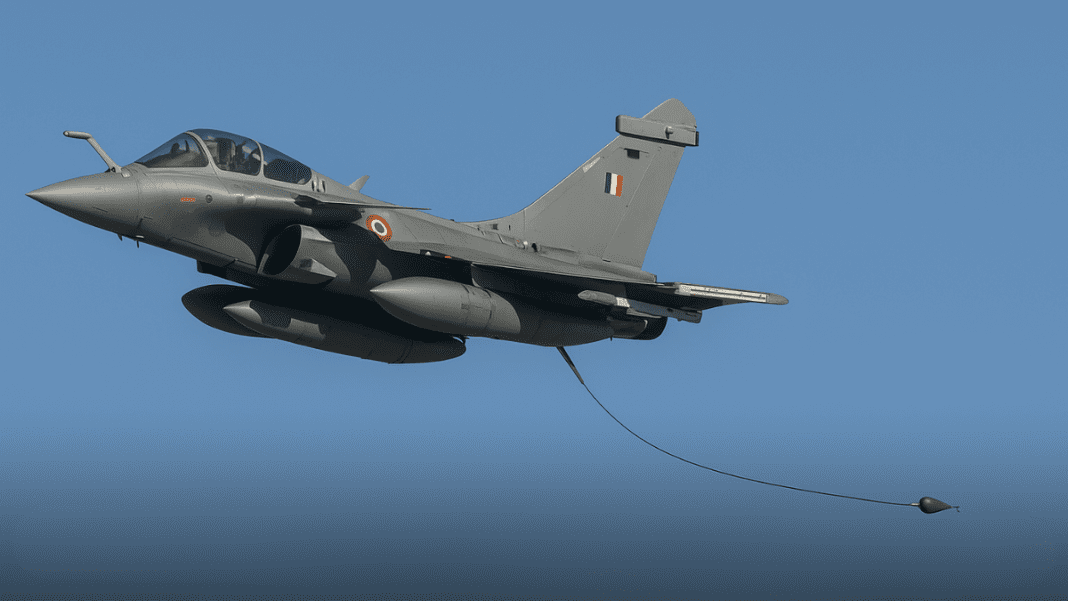In May 2025, a four-day military operation took place between India and Pakistan. During this operation, the Indian Air Force (IAF) reportedly used an advanced decoy system powered by artificial intelligence. This high-tech system was attached to Indian Rafale fighter jets. It fooled Pakistan’s defense into thinking they had successfully shot down the real aircraft. The device behind this surprising success was the X-Guard, an AI-driven towed decoy system mounted on Rafale aircraft.
According to a report by idrw.org, the operation was named Operation Sindoor. It showcased one of the most remarkable uses of artificial intelligence in air warfare to date. Former US Air Force pilot Ryan Bodenheimer had flown both F-15E and F-16 fighter jets. He called the use of the X-Guard system the ‘best spoofing and deception we’ve ever seen.’
Let’s break down how a small, 30-kilogram machine reshaped air combat during this brief but intense conflict.
Hypersonic Gamble? Pakistan Says It Took Out India’s S-400—New Delhi Calls It Propaganda
What Is the X-Guard and How It Works
The X-Guard system was developed by Rafale Advanced Defense Systems and is designed to protect fighter jets from enemy radar and missiles. Though it weighs only 30 kilograms, it delivers powerful protection through a combination of high-tech engineering and artificial intelligence.
The system works by trailing behind the aircraft, connected via a 100-meter-long fiber-optic cable. This setup allows it to act like a “ghost” version of the real jet. It emits a 500-watt, 360-degree jamming signal, which mimics the radar signature and Doppler effect of a real Rafale fighter jet. In simple words, enemy radars and missiles get confused and think that the decoy is the actual aircraft.
The result? Enemy systems lock onto the decoy and not the real fighter jet.
Because the decoy mimics every movement and signal of the real aircraft, even modern missile systems struggle to tell the difference. This was exactly what happened with Pakistan’s Chinese-made PL-15E missiles and J-10C fighter jets during Operation Sindoor.
How the X-Guard Fooled Pakistan
During the operation, the Indian Air Force used Rafale jets equipped with X-Guard decoy systems. According to the report, Pakistan equipped its J-10C fighter jets with PL-15E missiles and KLJ-7A AESA radar systems, expecting them to detect and hit Indian aircraft. However, they were unable to differentiate between the real Rafales and the AI-powered decoys.
Former US pilot Bodenheimer stated that the X-Guard may have redefined electronic warfare. Pakistani systems, believing they had locked onto actual Indian fighter jets, reportedly launched missiles that hit the decoys instead.
The X-Guard’s real-time data link with the aircraft via fiber optics gave Indian pilots an upper hand. It allowed them to monitor the missile activity, check the health of the decoy system, and continue operating without signal disruptions — even under electronic jamming.
What further added to the surprise was the reusability of the X-Guard. Unlike older systems used by the US military — like the AN/ALQ-50 or ADM-160 MALD — pilots can launch the X-Guard in under two seconds. They can also retrieve it after use.
Reports from Jane’s Defence Weekly, cited by Business Today, suggested that some of Pakistan’s claimed hits on Indian Rafales were actually successful impacts on these advanced decoys.
So, while it appeared from the ground or radar readings that Indian jets had been shot down, the truth was very different.
The Impact of Operation Sindoor
Operation Sindoor became a landmark event in the history of Indian air warfare. It stood out because of the successful use of artificial intelligence and smart defense technologies. For the first time, a 30-kg decoy device managed to confuse enemy defense systems. It also survived the encounter and returned for reuse.
The idea of a “decoy wingman” was praised by aviation experts worldwide. It acted as a shield for the main aircraft and changed the way enemy radars identified their targets.
The use of such advanced tools shows how air warfare is evolving. The key point in this operation was not just speed or firepower — it was the ability to deceive and mislead the enemy without ever being seen.
Confirmed Strike: Indian S-400 Downs PAF’s U.S.-Made F-16 Near Sargodha Air Base
Former pilot Ryan Bodenheimer’s praise of the X-Guard as the most effective deception system he has ever witnessed, speaks volumes about the innovation behind India’s defense systems.
From confusing missiles to spoofing high-grade enemy radar, the X-Guard proved that in modern air combat, smarter can be more powerful than stronger.

